PV Is Entering the AI Era
1. AI Enables All Industries
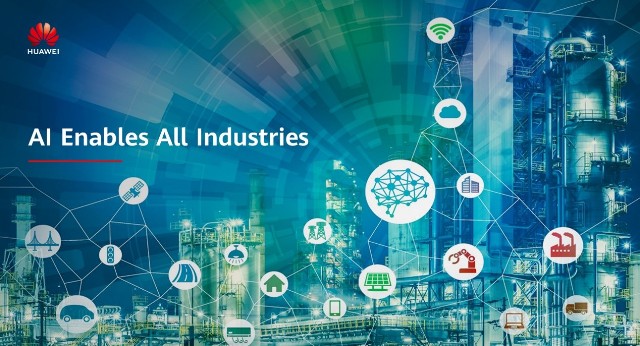
We are entering a fully connected, intelligent world.
Over the last few years, AI has become a high-frequency word, and it is enabling us to deal with new challenges, pursue better lives, explore science, and coexist with nature in harmony. For example, during the prevention and control of the COVID-19 pandemic, AI is playing a vital role in facilitating virus analysis, drug research and development, intelligent temperature measurement, as well as auxiliary diagnosis.
As an integral part of the infrastructure developed for new technologies, industries, and economies, it is predicted that production, distribution, exchanges, and consumption will all be transformed by AI, which in turn will facilitate the emergence of new technologies, products, industries, business forms, and models.
We are currently in the best, yet most challenging era. The improvements brought by powerful AI technologies to value creation methods across various industries is unprecedented. Today, our shared mission is to change the world through innovation.
Since the release of the AI strategy in October 2018, Huawei has steadily and methodically promoted corresponding strategy implementation, product R&D, and commercial use. In 2019, with the launch of Ascend AI processors, the all-scenario AI computing framework MindSpore, Atlas full-series products, and Ascend-based cloud services, Huawei completed the construction of full-stack, all-scenario AI solutions, which have been widely used across various industries. As a result, AI is becoming ubiquitous.
2. AI Ignites and Reshapes the PV Industry
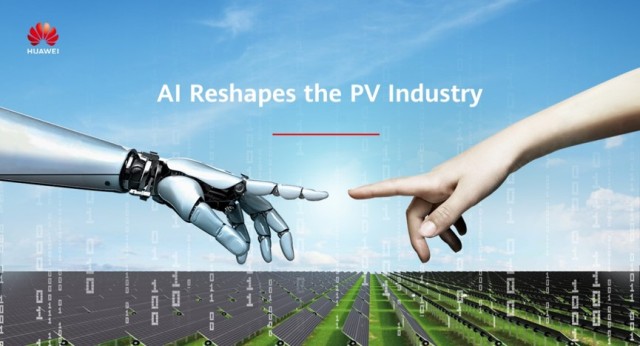
The global resource supply is insufficient, and the environment is deteriorating. Facing a choice between our existence and the further development of civilization, a new energy supply mode along with the development of renewable energy have become the only way to address the global resource crisis and climate change. In the future, the mainstream energy source will be renewable and represented by photovoltaic (PV) energy. However, the challenge lies in identifying a method to improve the penetration rate of PV energy, while also transforming it from parity energy to high-quality mainstream energy.
With the development of digital information technologies, Huawei smart PV has led the PV industry from the initial digital + PV era, to the Internet + PV era, and now the AI + PV era. Digitalization serves as the foundation of intelligentization, and advanced digitalization ensures fast realization of intelligentization.
In 2014, Huawei led the industry in developing PV intelligentization, launching the smart PV solution with string solar inverters functioning as the core. This solution realizes the intelligentization of PV plants by enabling solar inverters to serve as PV array sensors that support precise information collection for each PV string, essentially achieving perception intelligence.
From 2015 to 2018, Huawei further integrated digital technologies, with typical applications including wireless private network technologies, MBUS technologies, Smart I-V Curve Diagnosis, intelligent O&M cloud center, and the intelligent convergence of agriculture, fishery, and PV.
In 2019, Huawei released the first smart PV solution that integrates AI technologies.
In 2020, Huawei is continuing to deepen the integration between smart PV and full-stack, all-scenario AI solutions, and the company is also building a core architecture for device-edge-cloud synergy. This will maximize the value of each PV plant and accelerate the industry's intelligentization upgrade.
● Device: Solar inverters will be further upgraded to serve as smart PV controllers. This will enable the implementation of high-precision real-time data collection, real-time control of string-level energy yield optimization, real-time DC arc detection, and real-time response to grid-tied control, with real-time inference, execution, and self-closed-loop control capabilities.
● Edge: AI inference modules are embedded in the PV array controllers for an intelligentization upgrade. The modules collect device data and infer AI models for optimal power generation in real time, enabling optimal power generation and the grid-tied control of PV arrays.
● Cloud: An AI training and inference platform is deployed on the management system to implement continuous training and optimize the AI algorithm model, without the need for altering existing devices. As a result, the system energy yield and potential fault diagnosis accuracy are continuously increasing. The inference models of devices on the device and edge sides can be promptly updated in batches, achieving efficient collaboration.
Huawei's full-stack, all-scenario AI solutions have been widely used across industries such as electric power, manufacturing, and healthcare, significantly improving their intelligence levels. For instance, China Southern Power Grid utilizes the Atlas 200-based intelligent O&M and inspection system. Based on this system, the AI cameras installed on the power transmission tower can check the power transmission line in real time to detect foreign objects and damage. Unmanned inspection minimizes risks to humans, significantly improving both O&M efficiency and grid operation safety.
2.1 MPPT Reconstruction: Unleashing the Full Potential of PV Strings
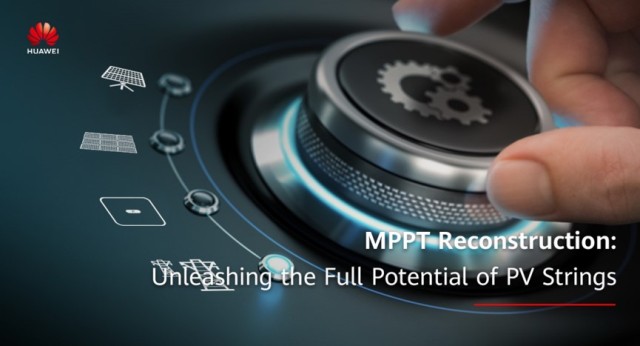
To build a closed-loop, collaborative, and convergent system, Smart DC System (SDS) has been developed. It is designed to integrate the previously independent PV modules, trackers, and solar inverters into a closed-loop synergy among bifacial PV modules, trackers, and smart PV controllers with multiple MPPTs, optimizing the entire DC generation system and traditional astronomical algorithms.
A smart PV controller is now working as a smart brain that self-learns and optimizes tracker optimization algorithms. In addition, AI training and modeling based on the neural network adjust the trackers to the optimal angle to fully realize the potential of each PV string in a PV plant. For example, an optimal policy of front-to-rear tracker linkage is provided based on the shadows, scattering ratios, and cloud movement, implementing dynamic optimization of the optimal tracker angle in real time. Over the last year, Huawei has tested a large number of PV plants, with tests in Huixi, Anhui, indicating that real energy yield increased by 1.31% over a period of 183 days. In projects such as China General Nuclear Power Group and Huanghe Hydropower, energy yield increased by 0.5% to 1%.
2.2 DC Safety Reconstruction: Fast, Accurate, and Comprehensive Protection
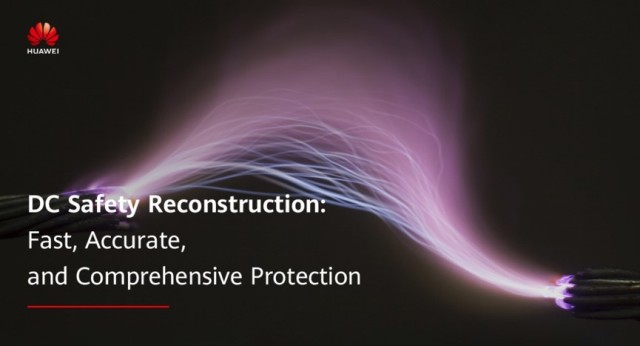
Safety is the top priority in both production and personal life. It will be especially tragic if a rooftop PV plant catches fire. According to results from an analysis of global cases, a large number of fire accidents are caused by DC arcs through poor contact, insecure connection of PV connectors, and cable aging and damage.
Traditionally, problems such as the poor connection of terminals and cable aging can only be addressed by improving the quality of engineering and of manual inspection and maintenance. However, these methods cannot be used to locate all problems, and accidents may still occasionally occur.
Currently, almost 100% of arcs can be identified using AI algorithms that ensure system safety by enabling quick-break protection. Huawei's AI-powered Active Arcing Protection represents the first attempt to integrate AI algorithms into arc-fault circuit interrupters (AFCIs) in the industry. Featuring more accurate arc detection and faster fault rectification, the solution comprehensively ensures the safety of distributed PV plants.
The AI Boost AFCI offers three unique features. First, it continuously and efficiently learns arc features using AI models, and it has a library with over 1 million arc features. Second, based on the powerful local chip computing capability, the AI Boost AFCI proactively identifies and analyzes over 92 arc feature comparison points, and performs precise detection without false reporting or under-reporting, providing comprehensive protection. Third, it can shut down and cut off a power supply within just 400 ms, which is much faster than the industry standard of 2.5s. The product enables customers to build secure rooftop PV plants.
We believe that in the near future, the AI Boost AFCI performance will become the industry standard globally.
2.3 O&M Reconstruction: Embracing Unmanned O&M
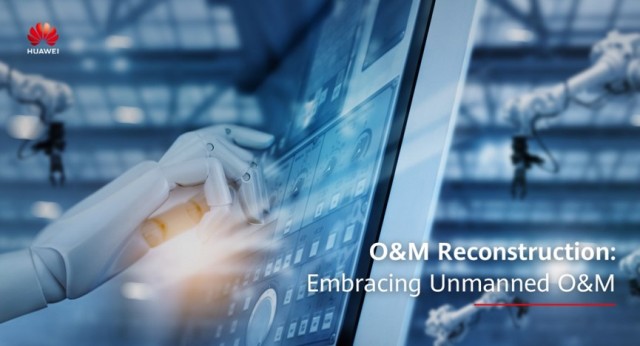
Due to the quarantine caused by the COVID-19 pandemic, PV plants are lacking O&M personnel, which has led to the topic of PV plants' O&M regaining attention within the industry. Huawei and several PV customers have successfully dealt with this issue, due to the fact that unmanned O&M trials have been conducted numerous times before.
Today, O&M personnel do not need to conduct onsite inspections of entire PV plants. The AI BOOST Smart I-V Curve Diagnosis supports remote scanning of all PV strings in one-click mode. Therefore, a 100 MW PV plant can be scanned within just 10 minutes, with a diagnosis report automatically generated.
In addition, the technology proactively delivers maintenance requirements, fault diagnosis, and precise location to O&M personnel, negating the need for manual inspection, and improving O&M efficiency by more than 50%.
The AI technologies further collect expert experience to search, filter, check, and identify more faults, proactively maintaining the health of PV plants for long periods. In this context, maintenance does not refer to locating specific faults. Instead, it refers to comparing performance indicators and the data provided by sensors with algorithms to check whether PV plant devices are running properly. Once an exception is detected, a warning is generated.
The fault preprocessing system has been widely used in the aviation field. For example, if the engine of an aircraft is about to fail, a warning will be first delivered to the control center of the airline. Subsequently, the control center will provide the pilot with instructions, and arrange maintenance personnel to arrive at the destination in advance, eliminating potential risks before an accident occurs.
As labor costs increase, the traditional maintenance method, which involves site visits by experts, will be gradually phased out. For example, AI technologies integrating extensive expert experience will replace O&M experts that conduct diagnosis and make decisions. Furthermore, drone inspection and robot-based automatic O&M will replace massive repetitive O&M work. As repetitive and dangerous tasks are completed by AI systems, these technologies free people from mundane work, thereby reducing manpower input while improving efficiency, speed, and accuracy. For instance, a drone equipped with a high definition (HD) or infrared camera can negate the need for manual inspection and complete real-time analysis and judgment, with much higher efficiency and accuracy. Therefore, PV plants will become unmanned in the future.
2.4 Grid-tied Algorithm Reconstruction: Providing Stronger Support
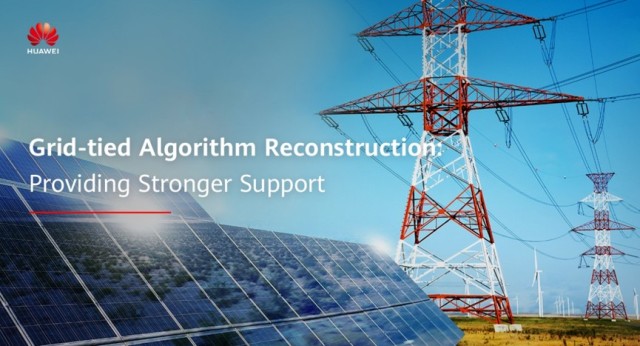
In the past, the stability and power quality of power grids relied on thermal and water electric generator sets. However, with the increasing penetration rate of renewable energy, as well as the decreasing use of traditional electric generator sets, the short-circuit ratio (SCR) of power grids will gradually decrease. As such, power grids are facing challenges in terms of stability.
According to the 14th Five-Year Plan, ultra-high voltage (UHV) development will be accelerated as the focus of new infrastructure. Renewable energy with a strong high voltage ride through (HVRT) capability is imperative to maintaining the safety and stability of power grids. The new national standard in 2020 raises the admission threshold and the power grid adaptability requirements in terms of the stability of active power output during HVRT, HVRT and low voltage ride through (LVRT) capabilities, and frequency adaptability.
Therefore, to ensure that renewable energy can be connected to power grids on a large scale, solar inverters must have a stronger SCR adaptability, continuous and fast HVRT and LVRT capability, and fast frequency modulation capability. These are the prerequisites for grid connection.
Huawei smart solar inverters integrate the world-leading algorithm architecture and are equipped with stronger control capabilities. AI technologies are introduced for impedance reshaping to the industry, with multiple leading grid-tied algorithms integrated, such as dynamic damping adaptation. AI self-learning can proactively identify the electrical features of a PV plant and automatically adjust the grid-tied algorithm to match the power grid. For example, Huawei solar inverters support sending end during HVDC, a minimum power grid SCR of 1.5, a better connection to weak power grids, and fault ride through (FTR) capability. In addition, the active power is not derated during HVDC.
In the future, the grid-tied control capability of solar inverters needs to be continuously improved to support connection to weaker power grids, ensuring that in the case of low SCR, a PV plant can run stably without disconnecting from the power grid, and that the role of utility-scale PV plants can evolve from grid-following, to grid-supporting, and finally grid-reconstructing as an independent network. The goal is to transform PV energy from parity energy to high-quality mainstream energy.
2.5 Three-Level Collaborations: Building Optimal PV Plants
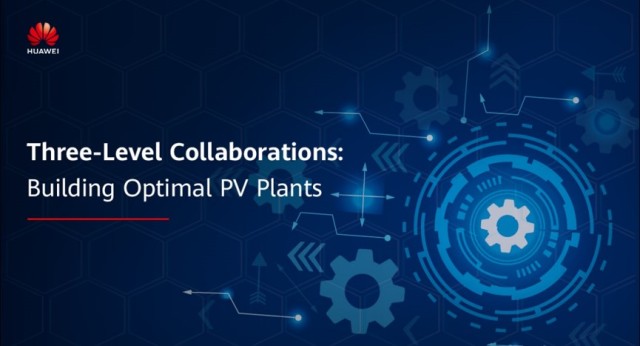
The term "synergy" is derived from an Attic Greek word. It refers to a process or capability of coordinating two or more resources or individuals to achieve a goal in a coordinated and consistent manner. How can we use digitalization to maximize benefits by ensuring independent devices collaborate effectively?
Huawei adopts three-level collaborations among the solar inverter, PV array, and PV plant by starting from component efficiency, progressing to system efficiency, and then plant efficiency in a coordinated manner, building the optimal power generation mode.
At the device level, improvements have been made in the efficiency and power density of solar inverters and the reliability of maintenance-free designs. In addition, solar inverters at the edge have also started to be equipped with AI perception and inference capabilities.
At the PV array level, devices are interconnected and optimized in a collaborative manner. An intelligent DC closed-loop system has been formed, consisting of bifacial PV modules, trackers, and solar inverters. The AI self-learning and big data feature mining technologies are used to dynamically adjust the tracker angle online to the optimal state, fully achieving the potential of each PV string.
At the plant level, driven by the smart PV array and edge computing, PV plants can proactively receive power grid requirements, automatically adjust the operating status, and implement real-time online collaboration. For example, an optimal adjustment of active and reactive power in a PV array can be implemented to optimize the energy yield of an entire PV plant under the power factor requirements of the power grid.
3. AI + PV = Green and Intelligent World
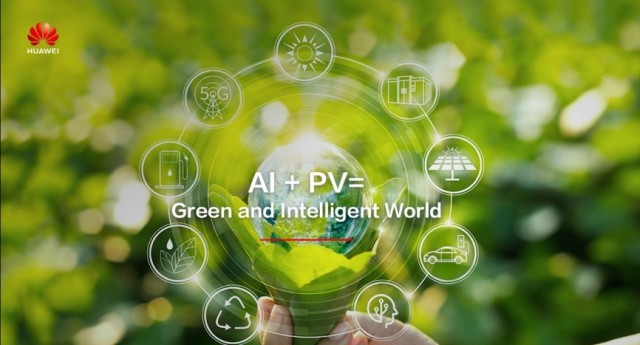
In the future, AI will be as ubiquitous as water and electricity. It is a strategic technology that will lead the future, and it is a new core engine that will drive PV industry transformation towards intelligentization. 2020 will witness the comprehensive integration of cloud, AI, and 5G technologies.
As digital technologies and renewable energy are reshaping the world, we firmly believe that our society will become intelligent in the next three decades. Powered by AI technologies, the PV industry will be reconstructed and redefined, and the new world, where everything is sensing, connected, and intelligent, will become greener and more vibrant.
Authors:
Tony Xu, President of Huawei Ascend Computing Business
Chen Guoguang, President of Huawei Smart PV Business

